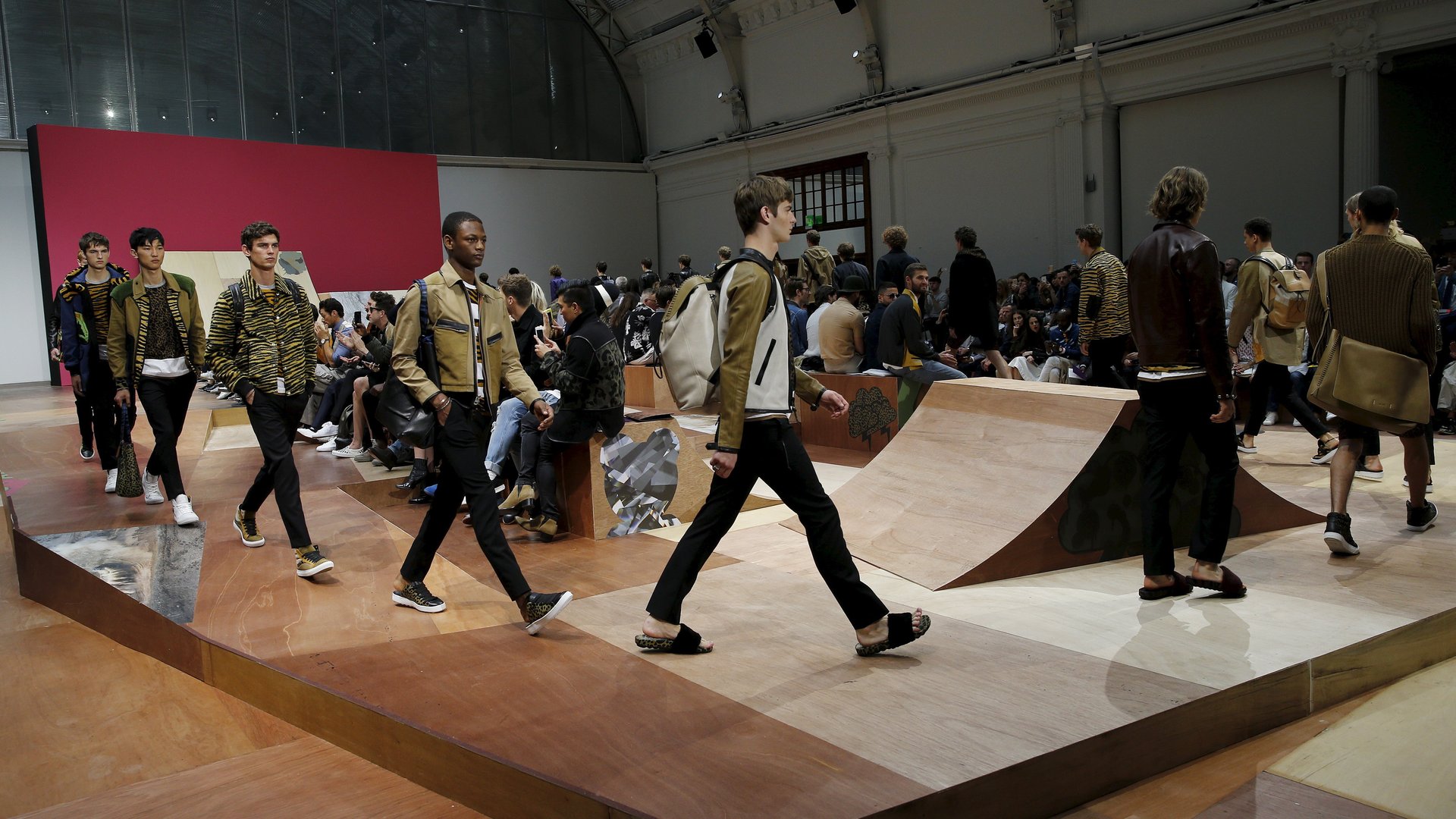Coach wants to be the American Louis Vuitton
Coach, the venerable but rather staid American brand best known for its omnipresent leather bags and accessories, wants to become a genuine luxury house—or at least be perceived that way.


Coach, the venerable but rather staid American brand best known for its omnipresent leather bags and accessories, wants to become a genuine luxury house—or at least be perceived that way.
The company is in the midst of serious regrouping at the moment. Sales growth has been slowing for more than a decade, and then plummeted last year. Today (August 4), the company reported that its earnings for fiscal 2015 fell 12.8% to about $4.2 billion.
Like its closest American counterpart, Michael Kors, Coach has become pricey yet basic at the same time—the kind of brand people tend to only buy on sale or at outlet stores, rather than at full retail.
Coach’s CEO, Victor Luis, has been working to turn things around. The strategy is basically to present Coach as something more like a European luxury house—the American Louis Vuitton, albeit with far more modest prices.
“Our intention is to create a true Coach house,” Luis said on the company’s earnings call with analysts.
But Coach is still some ways from the stratosphere of high-end goods typically associated with a luxury house. The brand’s main product, its handbags, still run a few hundred dollars—not the few thousand you’d pay for anything by Louis Vuitton. They’re aimed more at the high end of the middle market, or perhaps the low end of luxury—which isn’t actually all that luxurious.
Instead, Coach is basically rebranding. It has been rolling out products by Stuart Vevers, the creative director it hired two years ago, who previously designed for luxury labels including Louis Vuitton, Bottega Veneta, and Givenchy.
It also wants to emphasize its craftsmanship and heritage as “the original American house of leather,” according to Luis, and it will soon roll out campaigns and events to celebrate that heritage, as it turns 75 next year.
No luxury house is complete without a clothing line or two. Last year Coach showed its first women’s collection, and earlier this year debuted its first men’s collection in London. Both displayed an edge and attitude one doesn’t normally associate with Coach, which was presumably the point. Come September, Luis said, the house will go a step further and do its first “true presentation” for women at New York Fashion Week, suggesting a full-on runway show.
In the meantime, it has been redesigning its stores around the world—150 should be done by the year’s end—and even giving sales associates new uniforms to display the company’s emphasis on ”modern luxury,” as Luis put it.
But Coach has an uphill climb ahead. It is trying to convince the high-end fashion crowd that it’s cool and relevant, even though its handbags haven’t changed that much. Meanwhile, people have become used to buying those bags at a discount.
Coach is trying to address the problem. It has cut way back on promotions, reducing flash sales from three each week to just two per month. But that strategy has started to hurt. North American sales were down 20%, “impacted by our deliberate actions to curtail promotions and elevate brand perception,” Luis said.
The next step for Coach is to convince people that it’s a brand worth buying at full price.